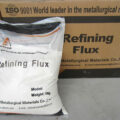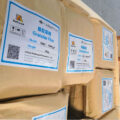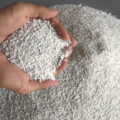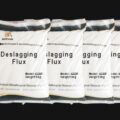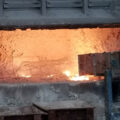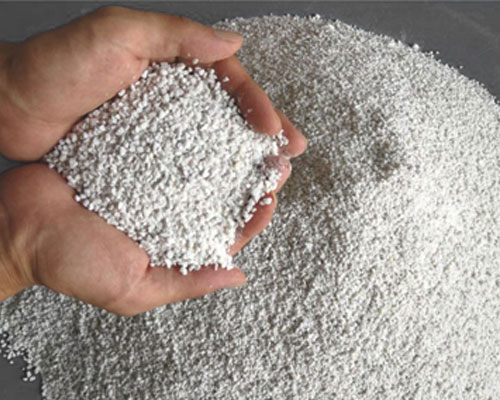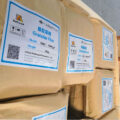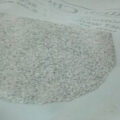Fluxes for aluminum alloys are generally composed of chlorides and fluorides of alkali metals and alkaline earth metals, and their main components are KCl, NaCl, CaF, Na3 AlF6, Na2 SiF6, etc. The physical and chemical properties of the fluxes (melting point, density, viscosity, volatility, hygroscopicity, and interface with oxides) play a decisive role in the refining effect.
Fluxes for Aluminum Alloys
Chloride salt is the most common basic component in aluminum alloy flux, and the mixed salt of 45% NaCl and 55% KCl is the most widely used. Because they have a strong ability to infiltrate solid Al203, inclusions and oxide film, and the specific gravity of NaCl and KCl at the melting temperature is only 1.55g / cm and 1.50g / cm, which is significantly smaller than that of aluminum melt. Therefore, Fluxes for Aluminum Alloys can spread well on the surface of aluminum melt, crush and adsorb the oxide film on the surface of the melt. However, the flux containing only chloride salts, the crushing and adsorption process is carried out slowly, you must manually stir to accelerate. Chloride has low surface tension and good wettability, and is suitable as a covering agent.
A small amount of fluoride salts such as NaF, Na3 AlF6, and CaF2 are added to the chloride salt mixture, mainly for refining. Fluoride salt flux can also effectively remove the oxide film on the surface of the melt and improve the degassing effect.
(1) Fluoride can chemically react with aluminum melt to produce gaseous AlF, SiF 4, BF3, etc. They promote the separation of the oxide film from the aluminum melt and squeeze the oxide film.
(2) The current generated at the interface where the above reaction occurs also causes the oxide film to be “washed” and broken. Therefore, the presence of the fluorine salt significantly accelerates the destruction process of the oxide film on the surface of the aluminum melt, and the hydrogen in the melt can easily escape.
(3) Fluoride (especially CaF2) can increase the surface tension of the mixed molten salt, spheroidize the molten salt of the adsorbed oxide, facilitate separation from the melt, and reduce the loss caused by the slag entrapped in aluminum.

Flux Refining Method
The flux refining method has a good effect on discharging non-metallic inclusions. In addition to the physical and chemical properties of the flux, the degree of purification is also largely dependent on the refining process conditions. Such as the amount of flux, the contact time and contact area of the flux with the melt, stirring conditions, temperature, etc.
When smelting aluminum alloy waste, the quality of the waste is different, and the amount of covering agent and refining agent is also different. When smelting good quality waste materials, the amount of covering agent and refining agent is relatively small. When smelting the waste with poor quality, the amount of covering agent and refining agent is large. For high-magnesium aluminum alloys, they should be covered with fluxes without sodium salt to avoid contact with sodium-containing fluxes. Sodium-free refining agents are mainly used for high-magnesium alloy flat ingots such as 5052 and 5754.
The flux refining method is widely used in smelting aluminum alloy production. The aluminum alloy melt is refined in the furnace, the flux is loaded into the refining tank, the refining tube is used as a carrier by inert gas blowing, and it continuously enters the aluminum liquid, and the flux and the melt are fully mixed. The stirring can achieve the purpose of refining. The greater the intensity of stirring and the more uniform the powder spraying, the better the refining effect. But it should be noted that the fluctuation of the aluminum liquid cannot be too large. Otherwise, it will lead to the formation of a new oxide film.


